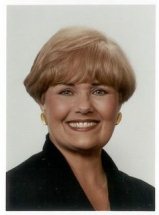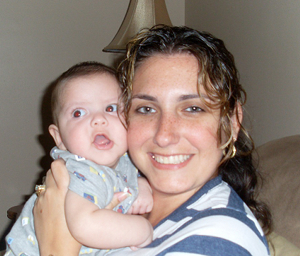Posted by Elena del Valle on September 29, 2010
Part five of a series
By Hilda Luisa Díaz-Perera

Hilda Luisa Díaz-Perera
As the guayabera became more popular, each region in Cuba gave it its own name. In Camagüey province, it was called camagüeyana; along the trocha or military divide during the wars for independence, it was known as trochana; in the town of Manzanillo, it was manzanillera; it was guayabana around the city of Havana, where it is said to have adopted the shirt collar for elegance. Today, although on the world stage it goes under the name of guayabera, there are many places where it is known as habanera and cubanita or little Cuban.
The guayabera came into its own during the XX Century. Cuban peasants were already wearing it and the politicians started using the guayabera during their campaign tours in the countryside. Soon it became the shirt of choice in the popular dance academies in Havana. For more formal occasions, a bow tie was added. Gradually, as more prominent men became followers, the guayabera was able to gain entrance into the most exclusive places and even official government ceremonies.
The earliest graphic testimony available of the guayabera is from 1906, even though the word guayabera is not formally legitimized as a Cuban noun specifically naming the shirt until 1921, when a man by the name of Constantino Suárez included it in his book Vocabulario cubano or Cuban Vocabulary, identifying it as attire popular among the peasants in the countryside.
Click here to read parts one through five of La Guayabera
Posted by Elena del Valle on September 22, 2010
Part four of a series
By Hilda Luisa Díaz-Perera

Hilda Luisa Díaz-Perera
So, the shirt that would become today’s guayabera was probably first made sometime in the XVIII Century. It then developed gradually over the XIX Century, not as a design made by one person, but rather as the result of the many shirt variations existing in the island and the efforts of several seamstresses and tailors who complied with shifts in taste and fashion by adding or deleting features to the original prototype.
Someone, we cannot identify who, added the collar. Someone else, who surely possessed very high sewing skills, must have thought of adding the narrow pleats with their minuscule stitches down the front and back of the shirt. Then, at some point during the Cuban wars for independence from 1868 to 1898, the design of the Cuban flag was incorporated onto the back of the guayabera.
Click here to read parts one through four of La Guayabera
Posted by Elena del Valle on September 15, 2010
Part three of a series
By Hilda Luisa Díaz-Perera

Hilda Luisa Díaz-Perera
Ciro Bianchi Ross, writing in the Cuban government-sponsored magazine Juventud Rebelde, points out that this early, and from his point of view questionable story about the Sancti Spiritus origins of the guayabera, if nothing else, marks the recognition of the existence of this special shirt and places it within the Cuban historical timetable. He explains that a description of the guayabera is not even present in Cuban literature of the XIX Century, until the 1890’s when author Nicolás Heredia writes about it in his Cuban novel, Leonela. Furthermore, Bianchi Ross says that the Cuban peasant did not wear the guayabera, but rather normally donned a loose blue or striped shirt over his trousers, a straw hat or sombrero de yarey, boots, a neckerchief to wipe off his sweat and his machete.
When the Countess of Merlin, (Havana 1789– Paris 1852), a Cuban aristocrat married to a French count, who is considered the first female Cuban writer, visited Havana in 1840, the guayabera was either not popular yet among the Cuban peasantry around the capital, or it did not go by that name. She does not mention it in any of her well-known writings or in the copious journal she kept of the trip. However, the fact that she does not mention the guayabera, does not mean it did not exist, at least as a prototype.
Click here to read parts, one, two and three of La Guayabera.
Posted by Elena del Valle on September 8, 2010
Part two of a series
By Hilda Luisa Díaz-Perera

Hilda Luisa Díaz-Perera
Where did the guayabera come from and is there a history behind it? Most of the time, where it concerns popular history, those who have made a difference in the lives of millions of people were never aware of it, and therefore the facts of whatever they contributed to mankind is lost in the jumble of reality, fiction and, in the case of the guayabera, in the fantasy of romance.
According to research conducted by Cuban journalist Pedro Carballo Bernal, several Andalusian and later Canary Island families who settled in Cuba around the Yayabo River, in Sancti Spiritus, began making shirts that would eventually become the precursors or prototypes of today’s guayaberas. More precisely, as the story goes, the first guayabera was made in 1709, by Encarnación Núñez García, an Andalusian wife from the town of Granada, hoping to please her husband, José Pérez Rodríguez, a potter by trade, who requested that she make him comfortable, loose shirts from a bolt of fine Belgian linen they had received from Spain.
Click here to read parts one and two of La Guayabera, a multi-part series
Posted by Elena del Valle on September 1, 2010
Part one of a series
By Hilda Luisa Díaz-Perera

Hilda Luisa Díaz-Perera
Salsa is Cuban. The bolero is Cuban. So is a cigar worthy of the name, the Cuba Libre, the mojito and also, believe it or not, the guayabera. I can’t remember life without it. I bought my Chinese-Cuban-American grandson his first guayabera, the tiniest thing, when he was barely a few days old: “Little man” I said, “Welcome to our culture!”
The guayabera is solidly etched in the psyche of a Cuban woman of my generation. I think most of us are emotionally bound to it through memories we hold very dear of fathers, grandfathers, and older family patriarchs wearing them. I can remember the day my then young and very conservative grandfather, finally gave in to my grandmother’s pleas to wear long-sleeved guayaberas instead of sitting through his meals fully suited, in the hot, Cuban weather.
Click here to read the entire article La Guayabera, part of a multi-part series.
Posted by Elena del Valle on August 25, 2010
By Adrienne E. Katz Katz

Adrienne E. Katz Katz
Mankind has walked on Earth for thousands of years, but women have been allowed to vote for only ninety years! It took 131 years after the U.S. Constitution was adopted before American men grudgingly granted women the right to vote.
Every woman today who has in her own name a job, a bank account, a credit card, a lease, a car, a mortgage, a diploma or a pension has these because she is standing on the shoulders of millions of women who fought for those privileges.
The United States is celebrating Women’s Equality Day on August 26, commemorating the passage of the 19th Amendment to the U.S. Constitution. This amendment gave women the right to vote on this date in 1920.
Click here to read the entire article Look how far we’ve come and how far we still have to go
Posted by Elena del Valle on August 11, 2010

Photos: Babyspot.com, Todobebe.com
Our nation’s birth rate has declined in the past 20 years. During that time period new mothers have become more likely to be older, better educated and less likely to be white. Fewer white women are having babies while an increasing number of babies are born of Hispanic moms, according to a recently released report. One in four births in 2008 was to a Hispanic mother. Although white women still represented more than half of mothers of newborns that year that was less than the 65 percent of white women who gave birth in 1990.
More than half of mothers of newborns in 2006 had spent some time in college which was an improvement over the 41 percent of women who had some college education in 1990. Older mothers of newborns, those 35 years of age and older, were much more likely to have some college education (71 percent).

James Rivera, co-founder, Babyspot
“I do see evidence of your findings, our site agrees with most of your data. Our traffic has increased in the last year, it’s around 30 percent increase,” said James Rivera, co-founder and chief executive officer, BabySpot, Inc. when asked if he sees evidence of these trends.
Women are also waiting longer to have babies than they did twenty years ago. While in 1990, teenagers had a higher share of all births (13 percent) than did women 35 years of age and older (9 percent) by 2008, the reverse was true with 10 percent of births to teens and 14 percent to women ages 35 and older. This increase in older mothers held across ethnic groups.

More unmarried women by far (41 percent) had babies in 2008 than in 1990 (28 percent). Black unmarried women were the most likely to have babies compared white and Hispanics.
“There are 4M (million) births per year and 1M (million) are to Spanish speaking parents, 25 percent of the newborns. This has been a constant for the past two years and is based on U.S. Census Live Birth Statistics,” said Cynthia Nelson of Todobebe.com. “We have a 20 percent increase in moms that join Todobebe in the past year and about 55 percent of our moms are pregnant at any one give time. There is no one month during the year that there are more births with the exception of the slight increase in September (December holidays trigger this event).”
In 2008, there were 4.3 million births in our country slightly more than in 1990 when there were 4.2 million. Between 2003 to 2007 the number of births increased each year and then declined by about 66,000; the researchers believe the decrease is the result of the economic downturn.

Immigrants tend to have higher birth rates than the native born although those rates have declined in recent years. The share of births to foreign-born mothers, 15 percent of U.S. births in 1990, grew 60 percent through 2004. In 2004, births to foreign-born women represented the majority of Hispanic (61 percent) and Asian (83 percent) births.
Although it is hard to think about our nation’s demographic profile in 40 years, according to Pew Research Center population projections and assuming current trends remain steady, 82 percent of the nation’s population growth through 2050 will be produced by immigrants who arrived in our country after 2005 and their descendants. The researchers estimate 142 more million people will fuel our population between 2005 and 2050; of these 50 million will be the children and grandchildren of new immigrants.
The report, The New Demography of American Motherhood, was written by Gretchen Livingston and D’Vera Cohn of the Pew Research Center based on data from the National Center for Health Statistics and the Census Bureau. It also included the findings of a national Pew Research Center survey about parenthood.
Posted by Elena del Valle on August 4, 2010
By Harald H. Vogt
Founder and chief marketer, Scent Marketing Institute

Harald H. Vogt, founder and chief marketer, Scent Marketing Institute
Photo: Scent Marketing Institute
This just in: A group called “Teens turning Green” chimes in on the safety (better, the lack thereof) of fragrances in consumer goods, body care products and fine fragrances that people buy to enjoy – or simply to smell better.
As sure as the kids go to camp, every summer the scent-adverse special interest groups pick up reports from organizations such as “The Campaign for Safe Cosmetics” that lament the fact that there are health risks resulting from “secret chemicals” in fragrance. Usually such advocacy groups are also anti-commerce and against aggressive marketing. At least with TTG that isn’t the case since they sell their own range of products via their web site while they criticize the products of others right next door. For just $130 the whole range can be yours’…
Click here to read the entire article Transparency – the new consumer demand
Posted by Elena del Valle on July 14, 2010
By Robin Blakely
Partner, Get There Media

Robin Blakely, partner, Get There Media
Photo: Get There Media
So you have a book, you’ve established a Latino following, and now you have your eye on the mainstream marketplace. Here are four key things you need to know to leverage your culture and connections to keep your momentum mobilized.
1. Focus on a different kind of culture.
Stop thinking of your audience as Latino or not Latino. Transcend that way of thinking. Instead, think of your target market as gifted, or funny, or heartbroken, or entrepreneurial. Focus on who they are as clean freaks, or foodies, or mystery lovers, or knitters. Your audience—whoever they are—has a culture of its own that doesn’t have to be described as Latino or non-Latino. Think about the culture your audience shares as a group. Without relying on a description that involves ethnicity, ask yourself:
Click here to read the complete article

Click here to buy PR Therapy
Posted by Elena del Valle on June 30, 2010
By Hilda Luisa Díaz-Perera

Hilda Luisa Díaz-Perera*
I knew it was the 4th. Yesterday had been the 3rd, so I was positive today was the 4th. I thought about the American Embassy in Caracas and regretted I had not yet registered there. They were probably hosting a celebration for American citizens living in the capital. I couldn’t explain why today my vocal chords had locked themselves on the words of Home on the Range quietly singing them away in my throat. The day had started out very early as it usually did for me: I had brought the dog down to the yard where he began to bark back at another invisible barking dog hiding somewhere in the dawn’s early light.
I had had my breakfast, not with my American Folgers, since I had had no time before I left the States to buy some to bring with me. I sat down at my sewing machine and got busy finishing the kitchen curtains. The 4th faded slowly away into the stitches, the minutes, the hours, the barking dog and my cat Maggie. Home on the Range had survived my busy-ness and indeed, the skies had not been cloudy all day. At 5 pm my oldest sister in-law called to invite us for dinner at a wonderful restaurant in Playa El Agua that stands right on the sand. From the terrace, you can see the wide expanse of ocean and your ears become full of the sound of the waves.
Click here to read the entire article My Venezuelan 4th of July


















